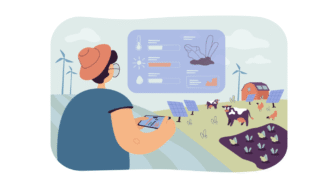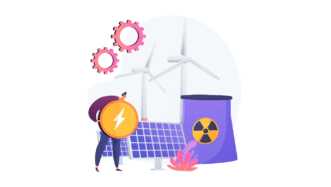LESSON OVERVIEW
The main objectives of this ESL lesson are to:
- learn and practise advanced vocabulary for discussing efficiency;
- talk about efficiency from various perspectives;
- discuss and watch a video about the Jevons Paradox.
With this lesson, students explore ideas of ‘efficiency’, practise advanced phrases (e.g. to the detriment of, in due course, per se, etc.) and share their opinions. They watch a video where people discuss the Jevons Paradox, read a text about it and work with vocabulary related to efficiency (e.g. output, seemingly, offset, etc.). Students also talk about the Jevons Paradox, explore other efficiency-related concepts, and brainstorm ways to address them.
WARM-UP AND VIDEO
This lesson begins with a warm-up. Students say how they would define efficient software, efficient use of one’s time and an efficient worker. Following that, they practise advanced vocabulary for discussing efficiency and complete phrases (e.g. insofar as, in keeping with, to no avail, etc.) with the missing words. Afterwards, students match the phrases with their definitions. Then, they complete tasks where they explore the sentences from the previous task again. Students discuss efficiency at work, in daily routines, and systems. After that, they watch a video about an example of the Jevons Paradox. Students guess the ending to the example. They then watch the video and check their answer. Next, students watch the video again and choose the phrases they hear.
VOCABULARY AND DISCUSSION
In this part of the lesson, students read about the idea of the Jevons Paradox and say what they think of it. Subsequently, they read the first paragraph of a text to check their ideas. Then, students work with some advanced vocabulary for discussing efficiency. They complete gaps in the text with the correct forms of words (e.g. put – output). After that, students discuss the applications and implications of the Jevons Paradox. Next, they read about other efficiency-related phenomena and choose the best words or phrases to complete the texts. Finally, students brainstorm ideas to counteract the phenomena from the previous activity. They consider companies or individuals.
HOMEWORK/REVISION
This lesson plan also includes an additional task that you can use as homework or revision. In the task, students complete gaps with words to complete phrases to talk about efficiency. The task is available in the teacher’s version of the worksheet. You can print it and hand it out to your students. It’s also included in the e-lesson plan.
WORKSHEETS
Subscribe to unlock these and many other Standalone lesson with the Premium plan
Subscribe













Great lesson! Thank you!
Awesome, thanks!
Brilliant. Love these C2 business lessons as someone who teaches ESL learners living in Ireland – really hard to find material challenging enough for them, so these are always appreciated.
Glad to hear that 🙂
Very useful lesson! However, I’m finding it challenging to teach it effectively in 60 minutes. Students have said they felt rushed or aren’t comprehending the dense material adequately. Perhaps 90 minutes is more realistic?
Hi, thanks for the comment! The suggested lesson duration is just an approximation, as it really depends on numerous factors such as the number of students in the group, their skills and topic-related experience, their engagement during the lesson and even their mood on that particular day. That’s why we label most standard worksheets as 60-minute lessons.